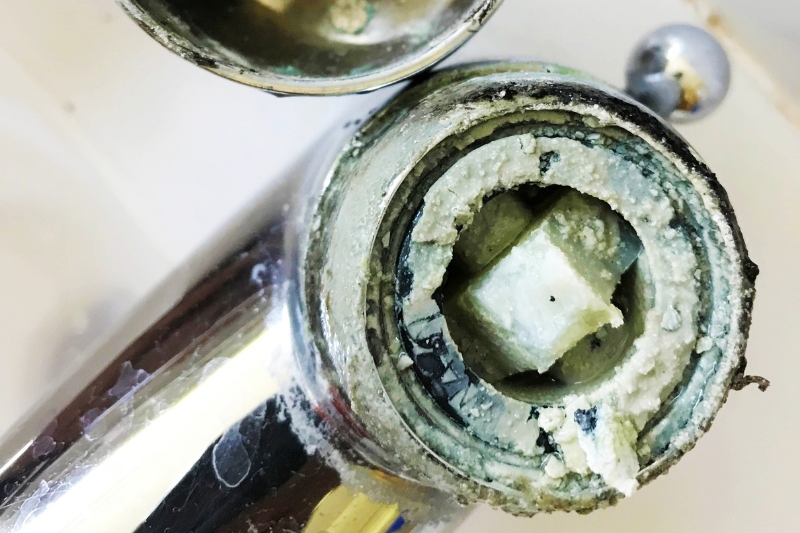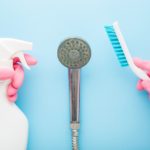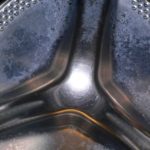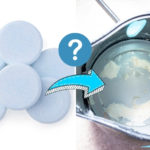Limescale’s a pain, huh? Not only does it look horrible, it can result in higher utility bills as heating elements become clogged and rendered less effective.
There are places in the UK that are renowned for their limescale. Places like Bath, for instance. The Romans called it Aquae Sulis, which means ‘Cripes, unbelievable limescale’, maybe.
In these places, the deposits from the water supply are no joke. It doesn’t take long at all thereabouts for the limescale to accumulate and get its feet under the table.
When limescale gets really thick, it’s tempting to think it’s game over. Not much you do will shift that little lot. Might as well live with it or replace the whole thing.
Hold your horses. That limescale is not only removable, but you can probably do it with a few products you have hanging around the home. Yes, really. Read on and see.
One note of caution. On lots of areas that limescale tends to stick around on, the surfaces can be a little vulnerable to acid wear.
So, always try a little of any of the following approaches on nicely inconspicuous parts first, before you go all out.
Natural Ways to Get Rid of Thick Limescale
1. Lemon juice
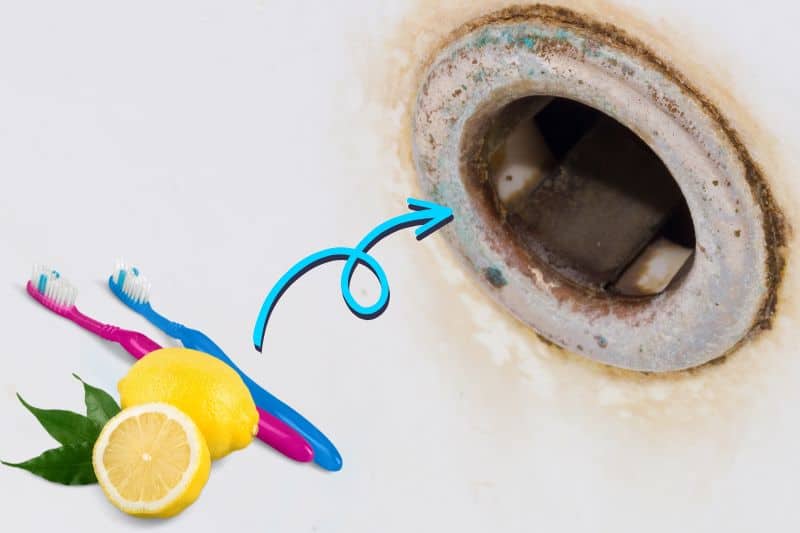
OK, chemistry time. Limescale is calcium carbonate, so it’s all about the alkaline. So, what you need to tackle it is a dose of acid.
Step up, Mr. Citrus. Using lemon juice will yield surprisingly effective results.
Either whack it, undiluted, onto a cloth and then rub on to the scaly patch, or dilute it with four parts water and spritz on to the area. Leave to soak for an hour, at least.
If you prefer, you can soak a cloth in lemon juice and leave it in place, over the scale. This can be very effective if you have a scaly tap. Then rub off, taking that scale with it.
Make sure you get all traces of lemon juice off, as it will be no friend to the finish on your tap or whatever it is you’re descaling.
2. White vinegar
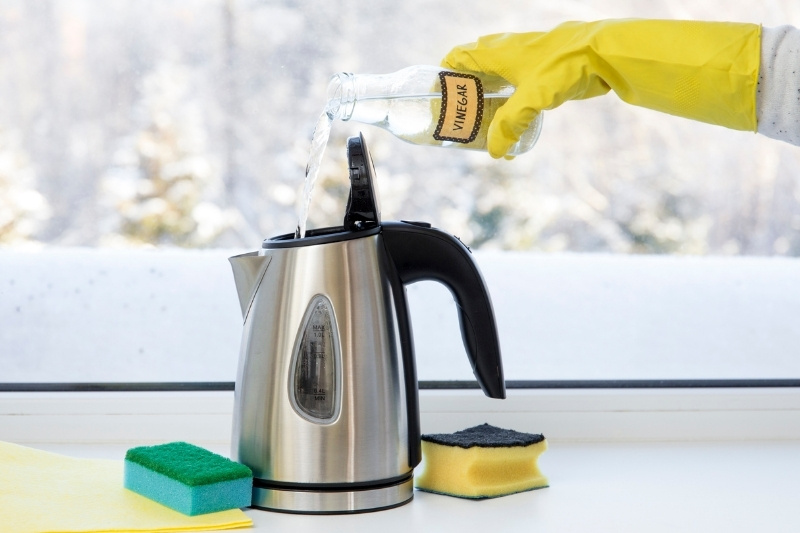
Use white vinegar with just the same method as with the lemony snippet. You can use it concentrated or spray on diluted.
Like lemon, vinegar is acidic, but a different kind: acetic, not citric. Like anybody cares.
All we really want to know is does it work? Yep, should do. Don’t worry if not—we haven’t finished yet.
3. Vinegar/washing-up liquid/salt combo
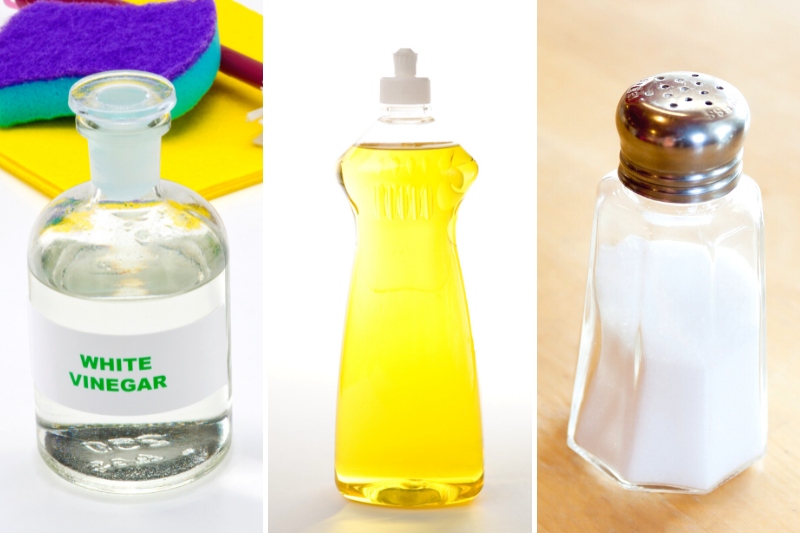
Mix equal amounts of white vinegar and washing up liquid in a spray bottle, together with a teaspoon of bog-standard salt.
Spray liberally and leave for 10 minutes. Then rub off with a damp lightly abrasive cloth.
4. Vinegar/bicarbonate of soda mix
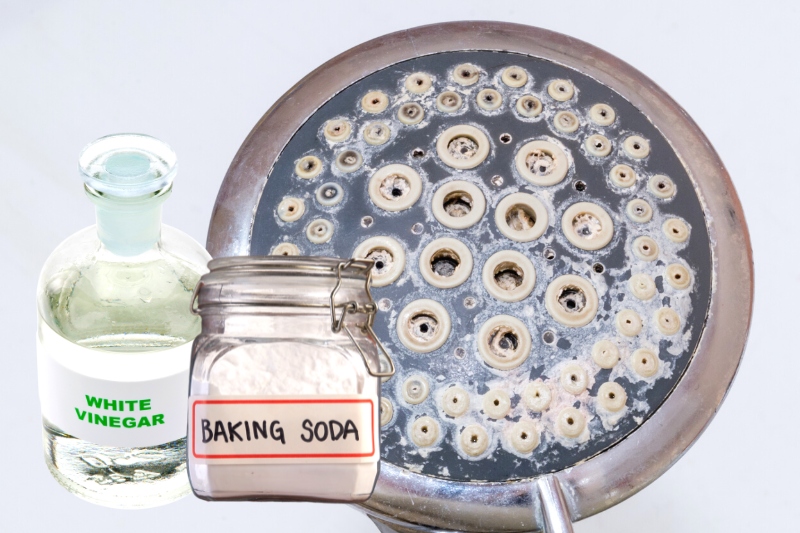
This method exploits the effervescent reaction that vinegar and bicarbonate of soda (baking powder) generate when mixed together.
Applied to a surface needing cleaning, the energy in the reaction can shift stains and displace scale.
Make a paste with two parts bicarbonate of soda to one part vinegar. Then apply thickly to your scaled up bits and leave for five minutes. Then wipe off with a damp cloth.
5. Toothpaste
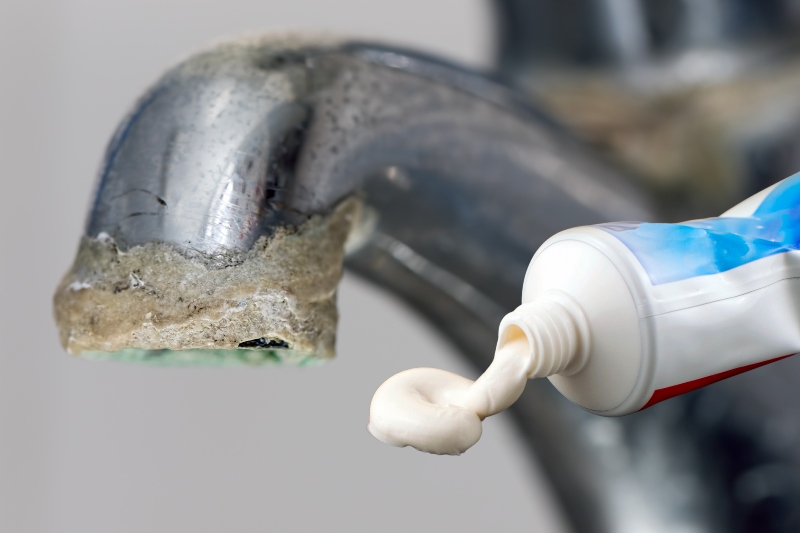
This wins the ‘most handily located cleaner in the bathroom’ award, hands down.
Some toothpastes make great cleaning materials, thanks to their slightly abrasive nature.
Make sure you don’t use the gel type. If you can lay your brush on one with bicarbonate of soda in it, so much the better.
Gently brush that toothpaste all over the scaled area. Which brush to use? A toothbrush is ideal.
Probably unwise to consider going back to using that particular brush for your teeth afterwards. And using someone else’s toothbrush is just plain mean. You’re better than that.
Once you’ve finished brushing, remove the residue with a damp cloth. Then buff up. And no, there’s no need to apply any mouthwash afterwards.
Other Ways to Get Rid of Thick Limescale
It’s good to use household ingredients. They’re cheap, they’re on hand and they’re usually not too harmful to you or the environment.
However, sometimes, you have to call in the chemicals. For those times when no amount of vinegar or toothpaste will make any difference to that serious scale situation, try these options.
1. Gel descaler
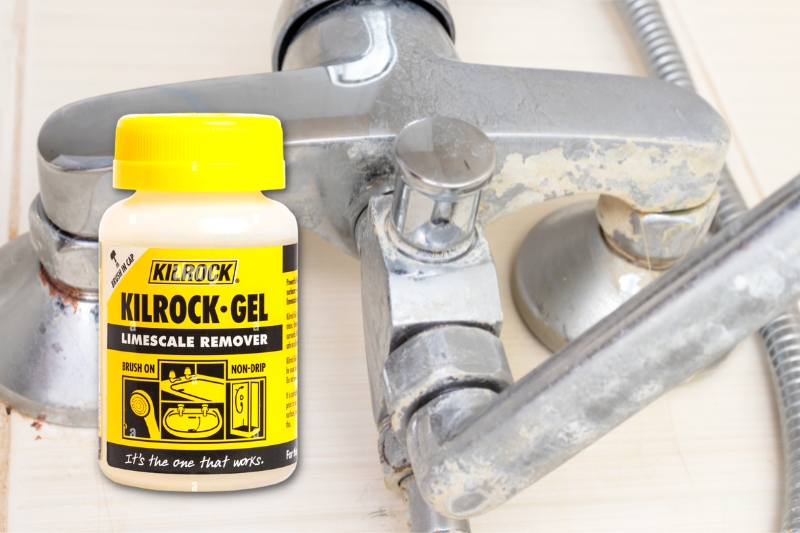
The approach with these fellas is as follows. You apply the gel (which is usually a non-drip formulation) and leave it to do its thing for a while.
You come back and find yourself positively bowled over by the results. That’s the idea, in any case.
This descaler from Kilrock is very well reviewed and comes complete with a little brush. It’s meant mainly for taps, basins and shower heads, that kind of thing.
2. Descaler liquid
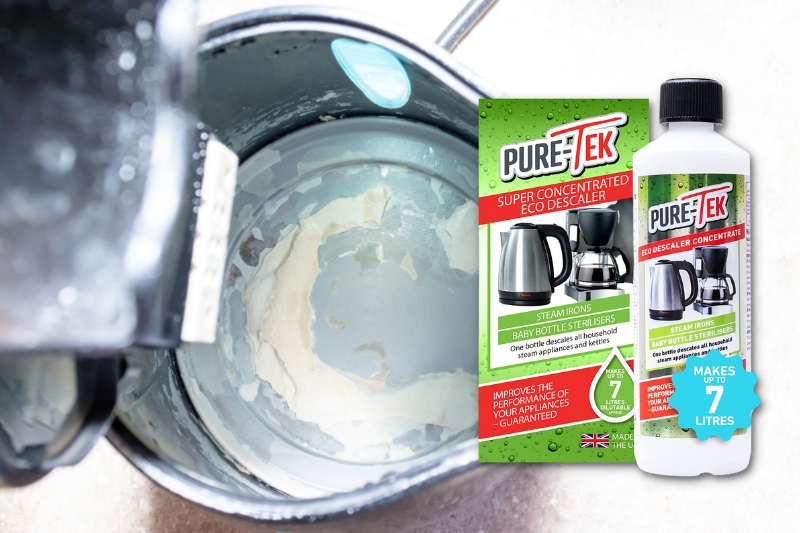
This is the kind of stuff you pour into a kettle or an urn, run through a coffee machine, apply to a steam iron or use on a dishwasher. It can come in powdered form which you stir into water, or it can be ready diluted.
The golden rule with these products is to remember to flush through with plenty of fresh water following the treatment.
Believe me, you won’t find yourself a convert to coffee featuring that unmistakable tang of descaler solution.
While some of these can be fairly full-on, chemically-speaking, it is perfectly possible to find more natural options, such as this one from Pure-Tek.
3. Cleaning block
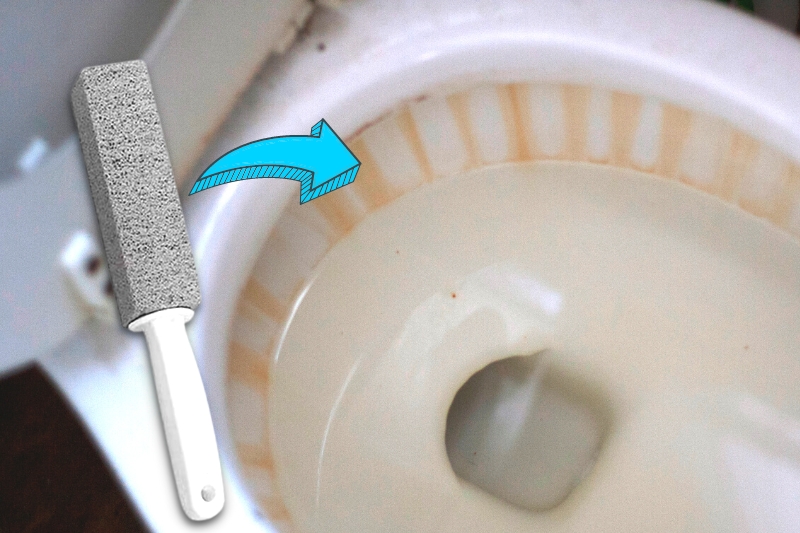
These are basically just abrasive bricks that you use to scrub away at the scale until it gets the hint and removes itself from the scene.
They do take a little elbow grease, but they have the tremendous advantage of not applying any chemicals to our already chemical-soaked world. They’re often made of recycled materials too.
Downside? Just be careful not to scratch your surfaces with it. One of the best places to use one of these is the toilet bowl, a classic collecting ground for scale.
But make sure you test it on a bit of porcelain (or whatever it is your toilet’s made from) around the back, first.
Top Tips for Tackling Limescale
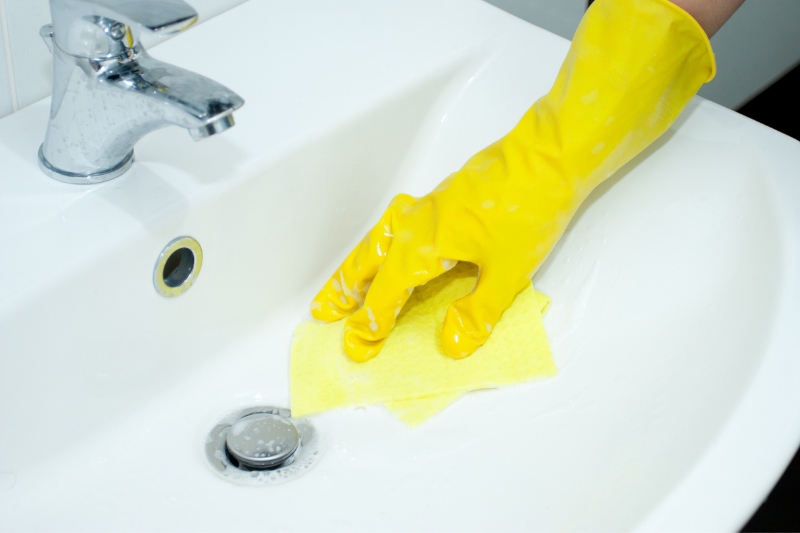
1. Clean little and often
Yes, it’s dreary to be told this but here it is nevertheless. Limescale won’t have the chance to build up if you clean around the hotspots frequently.
So do try to up the number of cleans you do. You don’t have to go mad – just a little more will give great results.
2. Don’t leave water standing
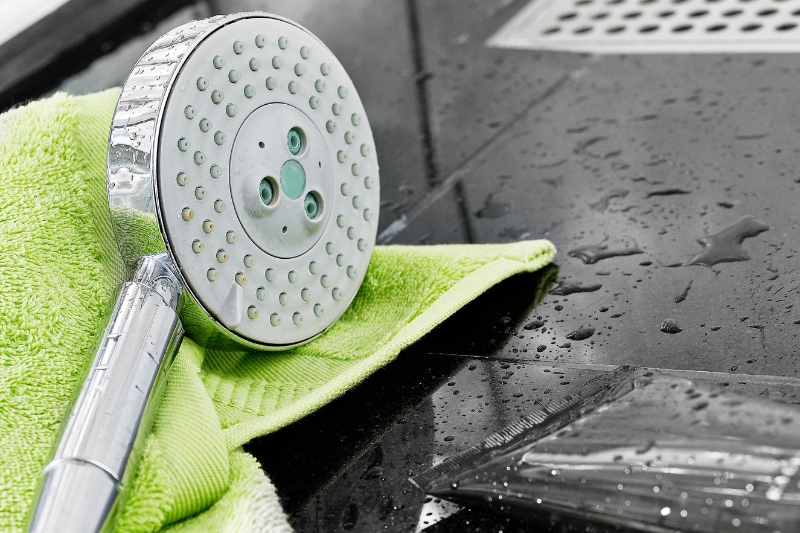
A fatal error when using any of these cleaning methods is to do all the spraying, rubbing and rinsing in a beautifully conscientious fashion, then you go and leave a patch of clean water pooling around the base of that tap.
This is just what limescale was hoping you’d do, as it won’t take long for it to start its pesky antics if there’s wetness afoot.
So, at the end of the cleaning action, be very careful to wipe up all traces of water. Only takes a second and will stop that dastardly scale in its tracks.
3. Move house

Yes, this one’s quite drastic. Only to be recommended if you’re really not getting anywhere with that limescale and it’s now ruining your life.
You can move to an area not so afflicted with hard water. But, in truth, you should now have all you need to give that scale the heave-ho.
Scaling the Heights
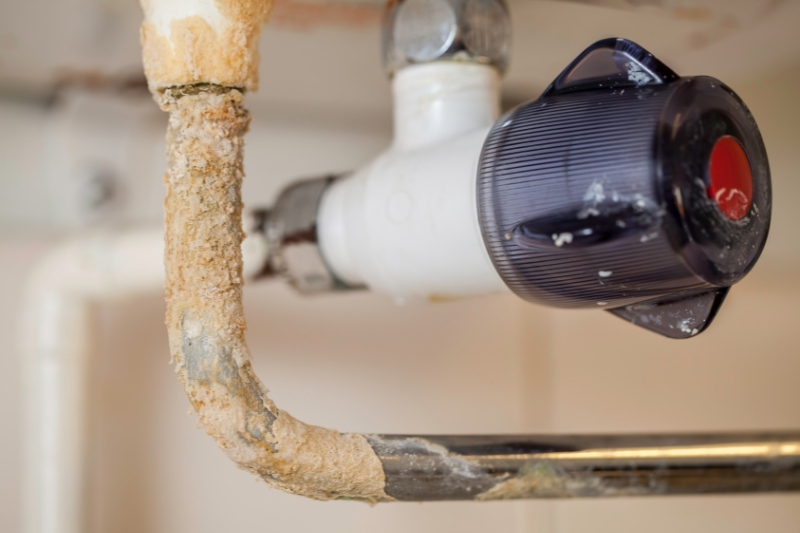
Limescale’s the kind of thing that seems a lot worse than it is. Just one look at that resilient unpleasantness is enough to set some people’s teeth on edge.
But, as we’ve seen, there are plenty of things you can do about it, even in the worst cases.
You just need to keep a couple of basic tips in mind and you’ll have your calcium culprit well and truly dispatched.
So, when your scale’s a sorry tale, you know what to do. You might even be able to get rid of it with what’s in your kitchen cupboards. Amazing. Off the scale.

Martin’s life revolves around films, dogs and food, but rarely all at the same time. At least two out of these three like to give clothes and furniture a hard time, and Martin enjoys discovering and writing about new ways to stop them doing their worst.
